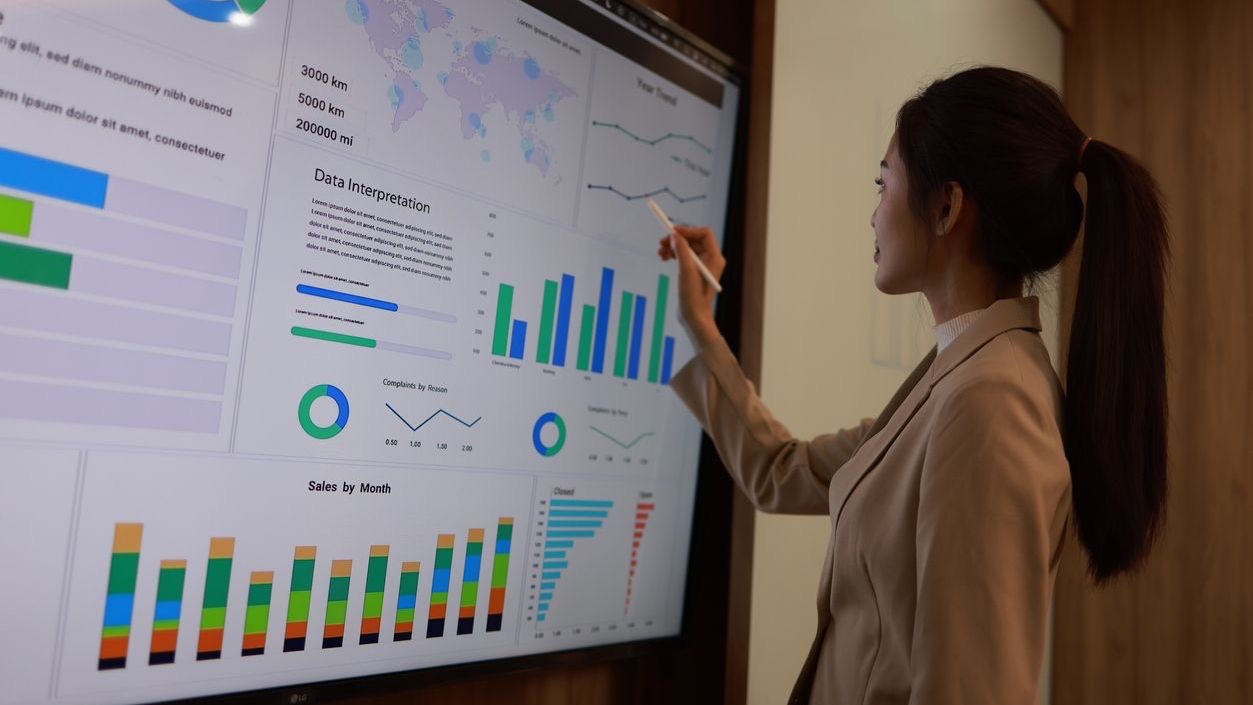In-app messaging has emerged as a crucial component of modern mobile and digital scheduling tools, revolutionizing how teams communicate and coordinate their work schedules. This integrated communication channel allows staff members, managers, and administrators to exchange information directly within scheduling applications, eliminating the need to switch between multiple platforms. For businesses managing complex shift patterns, employee availability, and last-minute changes, in-app messaging provides a streamlined solution that keeps all schedule-related communications centralized, contextual, and instantly accessible. As organizations increasingly adopt digital workforce management solutions like Shyft, the ability to communicate effectively within these platforms has become a competitive advantage in maintaining operational efficiency.
The significance of in-app messaging extends beyond simple text exchanges. Modern scheduling tools integrate sophisticated messaging capabilities that support everything from one-on-one conversations to team-wide broadcasts, multimedia sharing, automated notifications, and even AI-assisted communications. These features create a unified environment where schedule information and related discussions exist in the same space, providing context that standalone messaging apps cannot. For managers overseeing distributed teams or employees working across multiple locations, this integrated approach to communication reduces misunderstandings, accelerates decision-making, and ensures critical scheduling information reaches the right people at the right time. With team communication becoming increasingly vital to operational success, the strategic implementation of in-app messaging within scheduling tools has become essential for forward-thinking organizations.
Understanding In-App Messaging in Scheduling Tools
In-app messaging represents a specialized form of communication built directly into scheduling software, designed to facilitate immediate, contextual interactions related to workforce coordination. Unlike generic communication tools, these messaging systems are specifically engineered to complement and enhance scheduling functions. The evolution of this technology has transformed what was once a simple text exchange feature into robust communication hubs that serve as the nervous system of modern workforce management. Integrated within platforms like employee scheduling systems, these messaging capabilities provide a seamless experience where conversations about shifts, availability, and coverage exist alongside the actual schedule data.
- Contextual Communication: Messages are tied directly to specific shifts, employees, or schedule elements, providing immediate context for all communications.
- Real-Time Accessibility: Available across devices and platforms, ensuring teams can communicate regardless of location or device preference.
- Schedule Integration: Messaging functionality that works in tandem with scheduling features, allowing for seamless transitions between viewing schedules and discussing them.
- Notification Systems: Sophisticated alert mechanisms that ensure urgent communications receive appropriate attention.
- Searchable History: Archives of past communications that provide valuable records of schedule discussions and decisions.
The sophistication of in-app messaging varies significantly across different scheduling platforms. Basic systems might offer simple text exchanges, while advanced solutions provide rich media sharing, automated translations, and even AI-powered suggestions. The most effective implementations balance feature richness with usability, ensuring that communication tools enhance rather than complicate the scheduling process. As businesses increasingly recognize the value of integrated communication, scheduling software providers continue to expand their messaging capabilities to meet evolving workforce needs and communication preferences.
Core Features of In-App Messaging Systems
Modern in-app messaging systems within scheduling tools come equipped with a diverse range of features designed to optimize team coordination and information flow. These capabilities go far beyond basic text exchanges, incorporating advanced functionality that supports complex communication needs in fast-paced work environments. The most effective systems seamlessly blend messaging with scheduling functions, creating an integrated experience that enhances productivity while reducing communication friction. Understanding these core features helps organizations leverage the full potential of their scheduling software’s communication capabilities.
- Direct and Group Messaging: Support for both one-on-one communications and team-wide discussions, allowing for appropriate targeting of messages.
- Rich Media Sharing: Ability to exchange images, documents, videos, and audio messages related to scheduling needs.
- Push Notifications: Configurable alerts that ensure push notifications reach shift teams even when they’re not actively using the application.
- Message Templates: Pre-formatted communication options for common scheduling scenarios, saving time and ensuring consistency.
- Read Receipts: Confirmation mechanisms that verify when important messages have been seen by recipients.
- Priority Flagging: Systems for highlighting urgent communications that require immediate attention from team members.
Advanced scheduling platforms like Shyft extend these capabilities by offering specialized features such as broadcast announcements for company-wide updates, targeted messaging based on roles or departments, and automated communication workflows triggered by scheduling events. The integration with real-time notifications ensures that critical scheduling information reaches team members promptly, reducing the risk of missed shifts or coverage gaps. Additionally, features like message categorization and threading help keep communications organized, particularly in busy environments with high message volumes across multiple teams or locations.
Benefits for Team Coordination and Scheduling
Implementing robust in-app messaging within scheduling tools delivers substantial advantages for workforce coordination, operational efficiency, and team cohesion. These benefits extend across all organizational levels, from frontline workers managing their shifts to executives overseeing workforce operations. By centralizing schedule-related communications within the same platform used for schedule management, businesses can eliminate many of the friction points that traditionally complicate workforce coordination and lead to miscommunications, delays, and scheduling errors.
- Reduced Response Times: In-app messaging significantly decreases the time between schedule questions and answers, enabling faster decisions.
- Decreased Schedule Conflicts: Immediate communication about potential scheduling issues allows for proactive resolution before conflicts impact operations.
- Enhanced Shift Coverage: Streamlined communication makes it easier to identify and fill open shifts through platforms like shift marketplace systems.
- Improved Accountability: Message timestamps and read receipts create clear records of when information was shared and received.
- Context Preservation: Discussions about specific shifts remain connected to the relevant schedule data, reducing confusion.
Organizations that implement comprehensive shift worker communication strategies through in-app messaging typically report significant operational improvements. These include reduced administrative time spent coordinating schedules, decreased instances of missed shifts, faster fill rates for unexpected absences, and higher employee satisfaction with communication processes. The contextual nature of in-app messaging also creates valuable efficiencies—when discussing a particular shift, all participants can see the same schedule information, eliminating the misunderstandings that often occur when conversations happen outside the scheduling system.
Implementation Considerations
Successfully deploying in-app messaging capabilities within scheduling tools requires thoughtful planning and consideration of various technical, organizational, and user experience factors. Organizations must approach implementation as a strategic initiative rather than simply activating a new feature. Proper planning ensures the messaging system meets both current needs and can scale to accommodate future growth and evolving communication requirements. Effective implementation begins with understanding your specific communication challenges and how integrated messaging can address these pain points within your scheduling workflows.
- Platform Compatibility: Ensuring the messaging system works seamlessly across all devices and operating systems used by your workforce.
- Integration Capabilities: Evaluating how in-app messaging connects with other systems through communication tools integration solutions.
- Bandwidth Requirements: Assessing network capabilities, particularly for features like image sharing or video messaging.
- Data Storage Planning: Determining message retention policies and storage needs for communication archives.
- User Training Strategy: Developing comprehensive onboarding processes to ensure all users understand the messaging capabilities.
Organizations should also establish clear governance policies for in-app messaging, including appropriate use guidelines, response time expectations, and escalation procedures for urgent matters. Creating standardized internal communication workflows helps teams use the messaging system consistently and effectively. Additionally, phased implementation approaches often prove successful, starting with pilot groups to gather feedback before company-wide deployment. This measured approach allows for refinement of both the technical implementation and the associated policies before scaling to the entire organization.
Best Practices for Effective In-App Messaging
Maximizing the value of in-app messaging within scheduling tools requires more than just technical implementation—it demands thoughtful communication strategies and established protocols. Organizations that achieve the greatest benefits from these systems typically develop and enforce clear guidelines that govern how, when, and for what purposes the messaging functionality should be used. By establishing these best practices from the outset, companies can prevent common pitfalls such as message overload, unclear communications, or inappropriate use of the platform.
- Message Targeting Precision: Sending communications only to relevant team members rather than broadcasting unnecessarily.
- Clear Subject Identification: Using headers, tags, or categories to immediately convey a message’s purpose and priority.
- Response Time Standards: Establishing expectations for how quickly different types of messages should be acknowledged.
- Concise Communication: Crafting messages that deliver necessary information without excessive text.
- Appropriate Urgency Levels: Reserving urgent notifications for truly time-sensitive matters to prevent alert fatigue.
Leading organizations also develop specific protocols for different communication scenarios, such as shift team crisis communication or routine schedule updates. These protocols ensure consistency in how information is shared, helping team members quickly recognize and appropriately respond to different message types. Additionally, implementing training programs that cover both technical aspects of the messaging system and communication best practices helps establish a culture of effective digital communication. Organizations that invest in developing these communication standards typically experience higher user adoption rates and more positive outcomes from their in-app messaging implementation.
Integration Capabilities with Scheduling Systems
The true power of in-app messaging lies in its seamless integration with scheduling functionality, creating a unified experience where communication and schedule management work in tandem. These integrations transform what could be separate functions into a cohesive system where messages contain contextual schedule information and scheduling actions can trigger appropriate communications. The most sophisticated implementations create workflows where messaging and scheduling are so thoroughly interconnected that they function as a single, unified experience rather than separate tools.
- Schedule Change Notifications: Automatic alerts when shifts are modified, added, or canceled, with direct links to view the changes.
- Shift Swap Communications: Integrated messaging for negotiating shift trades with approval workflows built in.
- Availability Discussions: Conversation threads linked to specific availability requests or updates.
- Time-Off Request Coordination: Communication channels tied to specific leave requests for streamlined approval processes.
- Schedule Conflict Resolution: Messaging that highlights scheduling conflicts and facilitates their resolution.
Advanced platforms offer even deeper integration, such as the ability to initiate scheduling actions directly from within message threads. For example, urgent team communication about an unexpected absence might include options to immediately post the shift to a marketplace, contact qualified replacements, or adjust the schedule—all without leaving the conversation. These integrations significantly reduce the administrative burden of schedule management by eliminating the need to switch between communication and scheduling tools. Organizations utilizing multi-location group messaging can coordinate complex scheduling across different sites while maintaining clear communication channels for each location’s specific needs.
Security and Compliance Considerations
As in-app messaging systems handle increasingly sensitive workforce data and communications, security and compliance considerations have become paramount in their implementation and management. Organizations must navigate a complex landscape of data protection regulations, industry-specific compliance requirements, and general security best practices. Failing to address these concerns can expose businesses to significant risks, including data breaches, regulatory penalties, and loss of employee trust. A comprehensive security approach for in-app messaging within scheduling tools addresses both technical safeguards and governance policies.
- Data Encryption: Implementing end-to-end encryption for all communications to protect sensitive information in transit and at rest.
- Access Controls: Establishing role-based permissions that limit who can send, receive, or view different types of messages.
- Authentication Methods: Requiring strong authentication, potentially including multi-factor options for sensitive communications.
- Retention Policies: Creating clear guidelines for how long different types of messages are stored and when they’re automatically deleted.
- Compliance Documentation: Maintaining records that demonstrate adherence to relevant regulations like GDPR, HIPAA, or industry-specific requirements.
Organizations must also consider the implications of mobile access to messaging systems, implementing appropriate safeguards for devices that may be personal rather than company-owned. This often includes the ability to remotely wipe messaging data, enforce device security policies, and monitor for unusual access patterns. Additionally, regular security audits and penetration testing help identify potential vulnerabilities before they can be exploited. For organizations operating across multiple jurisdictions, compliance with various regional data protection laws adds another layer of complexity that must be carefully managed through appropriate technical controls and policy frameworks.
Measuring Communication Effectiveness
To truly optimize in-app messaging within scheduling tools, organizations must implement systematic approaches for measuring communication effectiveness and identifying opportunities for improvement. Without concrete metrics and analysis, it’s difficult to determine whether the messaging system is delivering its intended benefits or where adjustments might be needed. Effective measurement combines quantitative metrics with qualitative feedback to create a comprehensive view of communication performance and impact on scheduling operations. These insights enable data-driven refinements to both the technical implementation and the associated communication processes.
- Response Time Tracking: Measuring how quickly messages receive appropriate responses, particularly for time-sensitive scheduling matters.
- Message Volume Analysis: Monitoring communication patterns to identify potential overload or underutilization of the messaging system.
- Resolution Rate Metrics: Tracking how effectively scheduling issues raised in messages are resolved through the platform.
- User Adoption Statistics: Analyzing the percentage of team members actively using in-app messaging versus alternative communication methods.
- Satisfaction Surveys: Gathering feedback from users about their experience with the messaging functionality.
Advanced analytics can reveal deeper insights, such as correlations between communication patterns and operational outcomes like schedule adherence, overtime costs, or customer satisfaction metrics. Organizations implementing effective communication strategies frequently establish benchmarks for messaging performance and regularly assess progress against these standards. This data-driven approach allows for continuous refinement of both the technical platform and the communication protocols that guide its use. By consistently measuring and analyzing these metrics, businesses can quantify the return on investment from their in-app messaging implementation and make informed decisions about future enhancements or expansions.
Driving User Adoption and Engagement
The success of in-app messaging within scheduling tools ultimately depends on consistent user adoption and engagement across the organization. Even the most sophisticated messaging system will deliver limited value if team members continue to rely on external communication channels for schedule-related discussions. Creating a successful adoption strategy requires understanding the factors that influence user behavior and implementing targeted approaches to overcome resistance and build new communication habits. Organizations must recognize that technology adoption is as much about change management and culture as it is about technical implementation.
- Intuitive User Experience: Ensuring the messaging interface is simple, accessible, and requires minimal training to use effectively.
- Clear Value Demonstration: Communicating specific benefits that users will experience by adopting the in-app messaging system.
- Leadership Modeling: Having managers and leaders consistently use the platform rather than alternative communication methods.
- Training Programs: Providing comprehensive yet accessible instruction on both basic and advanced messaging features.
- Success Recognition: Highlighting and celebrating examples of effective communication through the platform.
Organizations that achieve high adoption rates typically implement communication tools for availability and preferences that make the messaging system an integral part of daily workflows rather than an optional add-on. This integration ensures that using the messaging feature becomes the path of least resistance for schedule-related communications. Additionally, gathering and acting on user feedback demonstrates responsiveness and builds trust in the platform. Some organizations even implement gamification elements or incentive programs to encourage early adoption and consistent usage, particularly during the critical initial implementation phase when new habits are being formed.
Future Trends in In-App Messaging for Scheduling
The landscape of in-app messaging within scheduling tools continues to evolve rapidly, with emerging technologies and changing workforce expectations driving innovation. Understanding these trends helps organizations prepare for future developments and make strategic decisions about their communication technology investments. The next generation of in-app messaging solutions promises to be more intelligent, contextual, and deeply integrated with broader workforce management functions. These advancements will further streamline scheduling processes while providing richer insights into communication patterns and their operational impacts.
- AI-Powered Communication Assistance: Intelligent systems that suggest responses, automate routine communications, and highlight important messages.
- Predictive Messaging: Proactive communications triggered by scheduling patterns, potential conflicts, or external factors like weather events.
- Advanced Media Integration: Enhanced support for video messaging, voice notes, and interactive content within scheduling conversations.
- Conversational Interfaces: Natural language processing that allows team members to make scheduling requests through conversational messages.
- Cross-Platform Unification: Seamless messaging experiences that span mobile devices, desktops, wearables, and potentially voice assistants.
The increasing focus on team communication is also driving innovations in analytics and measurement. Future systems will likely offer more sophisticated insights into communication effectiveness, team engagement patterns, and the relationship between communication behaviors and operational outcomes. Additionally, as workforce demographics continue to evolve, messaging interfaces will adapt to meet the preferences and expectations of younger workers who have grown up with digital communication as their primary mode of interaction. Organizations that stay attuned to these trends will be better positioned to leverage in-app messaging as a strategic advantage in their scheduling operations.
Conclusion
In-app messaging has fundamentally transformed how teams communicate about scheduling matters, creating unprecedented opportunities for efficiency, clarity, and coordination. By integrating communication directly into scheduling platforms, organizations eliminate the fragmentation and context loss that occurs when discussions happen across multiple channels. This integration delivers tangible benefits across the entire scheduling lifecycle—from initial schedule creation through last-minute adjustments and shift coverage challenges. As workforce management continues to grow more complex, the strategic advantage of unified communication and scheduling tools becomes increasingly significant.
To maximize the value of in-app messaging, organizations should approach implementation as a strategic initiative rather than simply a technical deployment. This means establishing clear communication protocols, providing comprehensive training, measuring effectiveness, and continuously refining both the system and its usage. By following best practices and staying attuned to emerging trends, businesses can leverage in-app messaging to create more responsive, efficient, and connected teams. The future of workforce scheduling lies in intelligent, integrated communication tools that not only facilitate information exchange but actively enhance decision-making and team coordination. Organizations that embrace this evolution will gain significant advantages in operational efficiency, employee satisfaction, and ultimately, business performance.
FAQ
1. How does in-app messaging improve team scheduling efficiency?
In-app messaging improves scheduling efficiency by centralizing all schedule-related communications within the same platform used for schedule management. This integration eliminates the need to switch between multiple applications, preserves context for discussions about specific shifts, and enables faster resolution of












